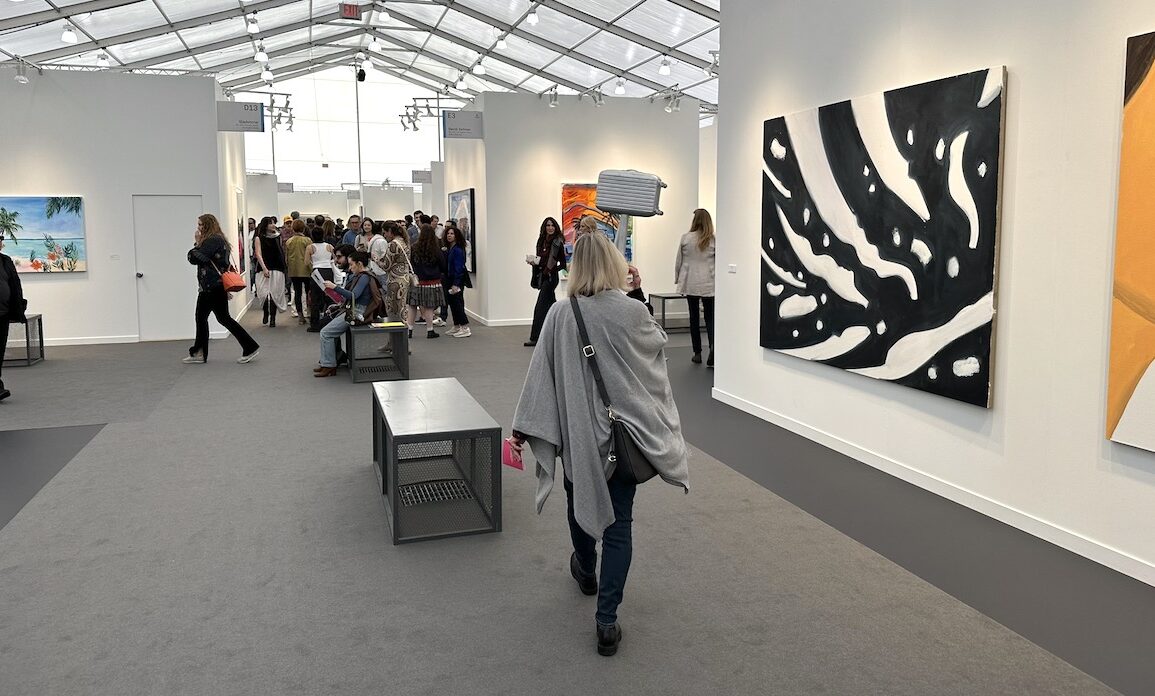
The latest Art Market Report by Art Basel and UBS reveals a continued downturn in global art and antiques sales, with a 12% drop in 2024 to an estimated $57.5bn. This marks the second consecutive year of decline, compounding the challenges faced by an industry still grappling with economic uncertainty and shifting collector behaviour.
After a strong post-pandemic recovery up to 2022 marked the second year of slowing sales, with the main drag on growth being the high end of the market, which thinned out significantly in 2023 and 2024, creating lower aggregate values despite stronger sales in some lower-priced segments.
Clare McAndrew, founder of Arts Economics and report’s author, describes 2024 as “a very challenging year overall.” The contraction ranks third-largest in the past 15 years, surpassed only by the 2009 financial crisis (-36%) and the 2020 pandemic slump (-22%), matching the 12% decline in 2012.
Regional Declines and Market Shifts
Nearly every major market saw reduced sales, with China hit hardest at -33%. The US, the world’s largest art market, fell by 9%, France and Italy each dropped 10%, and South Korea declined by 15%. Despite ongoing Brexit-related pressures, the UK fared slightly better with a 5% contraction, maintaining its position as the second-largest global art hub.
The report highlights that the downturn follows a pattern set in 2023, when sales dipped by 4%, driven by geopolitical tensions, economic pressures, and changing buyer habits—particularly at the high end of the market.
Contemporary Art Loses Momentum
Once a powerhouse of growth, the contemporary sector suffered a sharp decline, with auction sales plummeting 36% to $1.4bn—the lowest since 2018. McAndrew notes a growing risk aversion among buyers, with collectors retreating to established names over emerging talent.
“Several dealers spoke of a lack of curiosity among clients,” McAndrew told The Art Newspaper. “Before, there was competition for works straight from artists’ studios. Now, buyers only want names they recognise. The appetite for discovery has faded.”
This caution has forced galleries to rely more heavily on their top-selling artists as collectors become increasingly selective.
A Silver Lining? Growth in Lower-Priced Segments
While overall sales value fell, transaction volume rose by 3%, indicating more vigorous activity in the sub-$50,000 range. Auction houses saw a 20% drop in value but only a 4% dip in volume, suggesting a shift toward more accessible price points.
A similar trend emerged in the gallery sector, where smaller dealers (with turnovers under 250,000) declined by 9%. This hints at a possible market rebalancing, with a more democratic ecosystem emerging. Yet these modest gains are overshadowed by rising operational costs—from shipping to rent—which have squeezed profitability across the board.
Women Artists Gain Ground, But Long-Term Concerns Linger
One bright spot was the primary market, where sales of work by women artists rose by 3% year-on-year. However, the broader outlook remains uncertain. Despite a surge in billionaire wealth over the past decade, the art market has failed to reclaim its 2014 peak.
A dealer quoted in the report voiced concerns over generational shifts: “Young collectors aren’t buying paintings like they used to. With the contemporary bubble burst, we’re relying on older collectors who prefer Modern and Post-War works—but many are in their 60s and 70s. What happens in 10 years?”
The challenge, they suggest, lies in engaging new buyers: “There’s a vast pool of wealthy individuals with no art-buying experience. The key is reaching them rather than catering to existing collectors.”
Despite less optimism regarding sales, most businesses in both the auction and dealer sectors expected to keep employment stable in 2025. Most dealers (64%) had maintained stable numbers in 2024, with 24% increasing their staff. Looking ahead over the next 12 months, most dealers (74%) expected to hold steady employment levels, with 19% forecasting a rise and only 6% anticipating any losses. Just over one-third (35%) of mid-tier auction houses had increased employment in 2024, with only 12% reducing numbers. The majority (69%) also hoped to keep employment stable in 2025, with 9% planning further expansions. The share expecting to lose employees also rose to 22% (from 5% the previous year).
Sales in the auction market fell for the second consecutive year in 2024, with combined public and private sales by auction houses dropping by 20% to $23.4 billion, their lowest level since 2020. This decrease followed a strong post-pandemic recovery and was significantly impacted by weakness at the high end of the market, with double-digit declines in the value and volume of sales in the $10 million-plus segment. Public auction sales declined by 25% year-on-year, while private sales through auction houses countered this trend with a 14% increase to $4.4 billion.
As the market navigates these headwinds, the question remains: can it adapt to a new era of collecting, or will it stay tethered to the tastes of a dwindling generation?
Tags
Art Basel/UBS, Global Art Market Report
This post was originally published on this site be sure to check out more of their content






